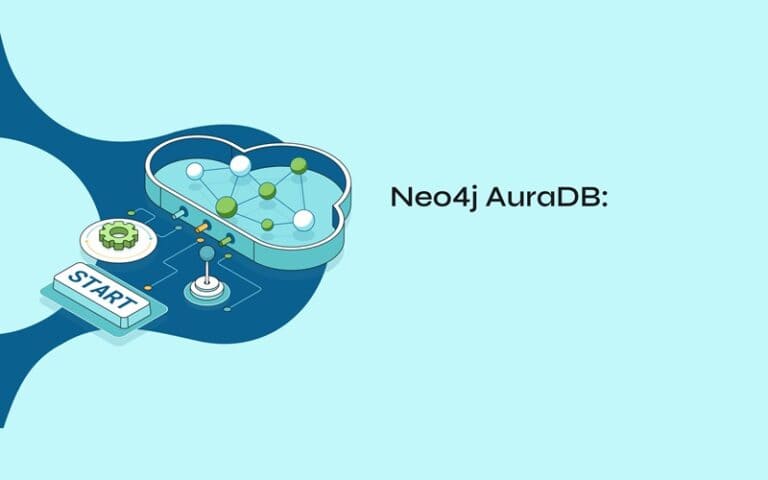Graph database and analytics platform company Neo4j says it has ‘transformed’ its Aura cloud database management system (DBMS) portfolio. The transformation in question takes the form of a set of software engineering constructs designed to accelerate the use of ‘graph’ data technologies in live production environments for any size or weight of workload. With graph databases best suited to use cases such as pattern discovery (and fraud detection), for knowledge management and as the power source for software-based recommendation engines (in scenarios where the total universe of data choices is particularly massive), the company says it has engineered 15X read capacity and usability-focused enhancements designed to make its graph offering easier to try, build & buy.
Going back to first principles for a moment, Neo4j reminds us that a ‘graph’ in the database context is composed of two elements: a node and a relationship. Each graph node represents and denotes an entity (a person, place, category or thing) and each relationship represents how any given two nodes are associated.
“This general-purpose [graph] structure allows us to model all kinds of scenarios – from a system of roads to a network of devices, to a population’s medical history or anything else defined by relationships. Unlike other databases, relationships take first priority in graph databases. This means your application doesn’t have to infer data connections using things like foreign keys or out-of-band processing, such as MapReduce. The data model for a graph database is also significantly simpler and more expressive than those of relational or other NoSQL databases,” explains the company, on it technical specification pages.
What is GraphRAG?
Graph databases are now playing a significant role of in generative AI and advanced analytics applications while being accelerated by GraphRAG.
NOTE: Essentially and fundamentally, GraphRAG is RAG, where the ‘retrieval’ path includes a knowledge graph, meaning that the core GraphRAG pattern is basically the same architecture as RAG with vectors, but with a knowledge graph layered into the picture. The ‘j’ in Neo4j is taken from the Swedish word ‘jätteträd’ (giant tree) to express the huge data structures the company’s platform works on.
Manage, model, ingest & visualise
Chief product officer at Neo4j Sudhir Hasbe details the new and enhanced functions on offer and says that a new Aura console with a generative AI co-pilot works to administer, manage, ingest, model and visualise data across all of Neo4j’s offerings and tools. Administrators and developers can also interact with these tools in natural language, eliminating the need for Cypher query language expertise.
“A no/low-code interactive dashboard builder called NeoDash creates maps, graphs, bar and line charts, tables and other visuals for anyone to understand, analyze and interact with. While developers have used NeoDash as part of Neo4j Labs, it is now a fully supported offering for enterprises,” said Hasbe and team.
A new self-serve offering, Neo4j AuraDB Business Critical is offered at a 20%+ lower price point than Neo4j’s traditional AuraDB Enterprise offering and is designed for highly available workloads requiring advanced security.
15x real-time read
The company has now achieved 15x scale improvement in real-time read capacity. Neo4j can now process 15X more real-time data within each cluster without compromising on latency. The result enables uninterrupted processing of data-intensive analytics workloads. Finally here, advanced enterprise control, audit and compliance capabilities include Customer Managed Encryption Keys that the customer owns, controls, and uses to encrypt and protect their data.
“By 2025, graph technologies will be used in 80% of data and analytics innovations — up from 10% in 2021 — facilitating rapid decision-making across the enterprise,” predicts magical analyst house Gartner.
“RAG techniques in an enterprise context suffer from problems related to the veracity and completeness of responses caused by limitations in the accuracy of retrieval, contextual understanding and response coherence. KGs (Knowledge Graphs), a well-established technology, can represent data held within documents and the metadata relating to the documents. Combining both aspects allows RAG applications to retrieve text based on the similarity to the question and contextual representation of the query and corpus, improving response accuracy,” notes the analyst house, in its hype cycle report.
Neo4j claims to offer ‘the most comprehensive’ and performant graph offering with vector search and search capabilities, the largest library of 65+ graph algorithms, deployment flexibility in any cloud or environment and strong community support. While graph database theory will surely form a part of any software engineering degree, not ever software developer will have made extensive use of these technologies as part of their approach to data science. That situation could of course be changing and Neo4j takes its place in the graph data market alongside technologies including Amazon Neptune, ArangoDB, Elastic Stack, JanusGraph, Stardog and DataStax.
